#5. The Anesthesia Patient Safety Foundation | ANESTHESIOLOGY® 2022
-
John "JW" Beard, MD, MBAImage

-
Jeffrey M. Feldman, MD, MSEImage
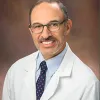
-
Desiree ChappellImage

-
Prof. Monty MythenImage
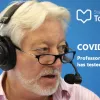
Review the role of the Anesthesia Safety Patient Foundation, the updated anesthesia monitoring recommendations and its importance with APSF Board of Directors John "JW" Beard and Jeffrey Feldman
Show Notes
Transcript
Speakers
In this podcast, John "JW" Beard, Chief Medical Officer of GE Patient Care solutions, GE Healthcare, APSF Board of Directors and Jeffery Feldman, Attending Anesthesiologist, Children’s Hospital of Philadelphia (CHOP) and Professor of Clinical Anesthesiology at the Perelman School of Medicine, University of Pennsylvania, APSF Board of Directors discuss the Anesthesia Safety Patient Foundation, its role, and the updated anesthesia monitoring recommendations.
This podcast was recorded by TopMedTalk at Anesthesiology 2022 in New Orleans. Listen to this podcast from the TopMedTalk platform here.
Top Med Talk
Desiree Chappell: Well, welcome to TopMedTalk. I'm Desiree Chappell, your host and we are here at Anesthesiology, 2022 in New Orleans, Louisiana at booth 2245 in the exhibit hall. I'm joined by my co-host Professor Monty Mythen. Hello Monty.
Monty Mythen: That's right, it's great to be here.
Desiree Chappell: It is.
Monty Mythen: This is the home of jazz. Is that right?
Desiree Chappell: It is!
Monty Mythen: Not blues, that´s Chicago.
Desiree Chappell: Jazz, actually, I just went to go listen to some jazz last night at Reservation Hall.
Monty Mythen: That's the trad stuff is that's. The real deal.
Desiree Chappell: It is the real deal, and we heard some real jazz last night. It was pretty amazing. Yeah, it was. Brought back some good memories, I’ve been going there in her life so. If you live in New Orleans or you haven´t been there check it out. Monty, we can talk about New Orleans the whole time, but let's talk about TopMedTalk at anesthesiology.
Monty Mythen: Well, it's our fifth year of being at the ASA. This is their anesthesiology 2022 we started at Boston, birthplace of anesthesia. You know, there we go celebrating that recently. Been at each ASA since and I think our presence has matured over time too.
Desiree Chappell: I would say that.
Monty Mythen: So, I'd say our I said they would be the pinnacle but look current pinnacle in our journey. This may be base camp we don't know. But here the very generous support of the American Society of Anesthesiology.
Desiree Chappell: Yeah, yeah.
Monty Mythen: We're here in partnership as TopMedTalk. So, thank you very much.
Desiree Chappell: Yes, we wanted to say thank you today, ASA, so much for the booth, it is absolutely amazing. We've had some wonderful conversations, and all of this is to support TopMedTalk and our free medical education to the world.
Monty Mythen: Free Open Access medical education doesn't keep saying 100 countries around the world, many of whom would Not have the possibility to listen if it wasn't for the generous support of the ASA and our wonderful industry partners.
Desiree Chappell: That's right, we have had numerous partners over the years and thank you to all of those. One of our partners is GE Healthcare. They've been involved, or we've been involved in collaborations in the past, and so today we wanted to highlight another conversation that we had in a recording role podcast. With a good, we're checking back in with Doctor JW Beard. JW, thank you for joining us.
JW: Thank you, it's a pleasure to be back.
Desiree Chappell: Yeah, absolutely. And then we have, excuse me, we have Doctor Jeffrey Feldman. Jeffrey for those who do not know you, can you give us a little bit about your background?
Jeffrey Feldman: Sure, of course. So, I'm practicing anesthesiologist. I currently practice at the Children's Hospital of Philadelphia and my I think my role here is quite representing the Patient Safety Foundation this year.
So, I'm on the board of directors, I chair the Committee on technology, I've been involved in the organization for more than 20 years now, and I'm just really passionate about the work that the APSF is able to do.
Desiree Chappell: Yeah, for sure. Well JW, multiyear both were at the Stoelting Conference and you´re Chief Medical officer for GE Healthcare. You're great, but you also really involved and very passionate about the APSF.
JW: Yeah, I am anesthesiologist by training, 15 years of of practice after wrapped up my residency. One of the ways I first became involved with a APSF was actually with a reported product malfunction in the field through their fingers called dear sirs at the time. And that happened in, I think 2017. During an IV fluid shortage. And what had happened is that IV fluid shoulders up to only larger volume bags being available, which would then attach to one of our IV infusion therapy products for that led to that product being malposition and being reported as kind of a product malfunction to APSF.
So, I had an opportunity to work with Jeff directly there, I met that clinician who reported it at the ASA that year. And I've always been a fan of APSF. The newsletters I've always had found incredibly informative and certainly the columns that that Jeff has written over time have been a highlight of it.
Desiree Chappell: Actually, well, for those who are listening. We have a lot of anesthesia providers here in the US and around the world. But tell us a little bit more about the APSF: the Anesthesia Patient Safety Foundation. But tell us a little bit more.
JW: It was a foundation that started in the United States, the signature publication is the newsletter, which is now separated globally.
Monty Mythen: It's one of the most reads, if not the most read
JW: So, hundreds of thousands of readers. And translated now into 8 languages, Russian and Arabic were added recently, and so its incredibly well circulated publication focused on patient safety issues in the only perioperative space. And so, it's everywhere from pre-op to post-op to focused interop to review of specific complex technologies like implantable cardiac devices, etc. The APSF also makes practice recommendations.
I think they're produced and circulated widely enough, and the organization is so well respected that it really impacts practice and it's become a very influential organization. And I'm happy to, we met at the Stoelting conference and I'm also very pleased to serve on the Board of Directors and the Committee on Technology also. So, it's an organization that's very much worthy of the support of me and my role, and I think just clinicians globally.
Desiree Chappell: For sure. Jeff, you've been involved with the organization for a while. What's your journey been there?
Jeffrey Feldman: Well, it's interesting cause it actually starts back to when I was a resident at the University of Florida. James Gravenstein was my mentor, and he was one of the founders of the organization. So, I kind of start forming, I was watching him in his office and putting it together and never really dreaming that I would end up on the Board of Directors. But anyway, so I followed the organization for all these years and the Committee on Technology is probably most active role, curating a lot for the newsletter, the rapid response column, formally dearsirs, is one of the most widely read, and it's really a highlight of the collaboration that we enjoy between questions and industry. Because those articles are always a complaint or some sort of observation about a product and we get the manufacturer involved in that dialogue. I think we make it very productive. But the other thing that I might add to what the JW: was talking about is I think one of the really unique things about the APSF is we really embrace all anesthesia professionals. We're an apolitical organization and so our goal really is empowering everyone at the bedside to do the safest care possible. And we also reach out to the industry partners and people from Joint Commission, nursing organizations, you know, whatever it takes to move patient safety forward, we're opening our arms.
Monty Mythen: So, it's never a blame game. It´s a how we work together to make the world a safer place.
Jeffrey Feldman: Move things forward, absolutely.
Desiree Chappell: And in APSF, really, they're walking the walk cause at the conference, whenever we were there, there were people from multidisciplinary groups, you know, in different types of providers and they all had a voice.
Monty Mythen: They all had a voice.
Desiree Chappell: Everyone had a part on the stage and presentations and conversation, and it was a really wonderful experience. So, kudos to you for to for living true to that.
Jeffrey Feldman: Well, thank you, it is very purposeful, and you know, JW: mentioned the direct practice recommendations.
Desiree Chappell: Yeah.
Jeffrey Feldman: Just last February we came out with some new recommendations around patient monitoring, and if we were to wait for the professional organizations to move forward with that, it's a very long process. It's not a critique, it's just part of the process.
But what I like about being involved in the APSF is we can bring experts together; we can come up with opinions that are well considered and then put recommendations out there that I think are really helpful to people in practice.
Monty Mythen: Why do these recommendations end up? Is it that they specifically targeted at hospitals or payers or providers? Or is it just a sort of natural seepage of the sort of right ideas into the community?
Jeffrey Feldman: Yeah, so it is.
It's probably more the latter and then we do publish it in the newsletter, so we get a lot of exposure with that. We do have a pretty active social media group in the APSF, and so that that group is really good about getting information out, and I'm not a Facebook follower per say, but there are a lot of people that that do follow the APSF that way. So, we do have a good way to do outreach, yeah?
Desiree Chappell: Yeah, well, let's start with a little bit to some of the recommendations that have been coming out of the Technology committee.
Jeffrey Feldman: So, on the monitoring side, that's our most recent effort. It started about three or four years ago, actually with one of our international committee members, John Hendricks. He came to one of the meetings with the observation that if you looked at monitoring recommendations from professional organizations around the world, they were very different. And of course, patient physiology and safety considerations were not that different around the world. And there are some organizations that were a little behind and so we took a look at a comparative review of those things, tried to bring everybody up to the same playing field with our recommendations.
I think specifically, we really targeted recommendations around EEG monitoring, because of concerns for awareness, particularly with Intravenous anesthetics and patients who've received muscle relaxants. So, we came out with very specific recommendations around that. Neuromuscular blockade monitoring has been a mission of the APSF for some time, and so we came out with very specific recommendations that you should always do that when using a relaxant, and preferably with a quantitative device, and we're going to be doing some more work around that going forward. And then there are some other lapses. For example, in the United States, anesthetic concentration monitoring was not considered standard and so we've tried to move that bar If we can with our recommendations.
Monty Mythen: Cause I'm sort of old enough to remember the monitoring standards coming in. And that what was that 80s?
Jeffrey Feldman: 80s, yep, yep.
Monty Mythen: Which was started with it's a good idea if you stay in the room. That seriously was. I'm not joking.
Desiree Chappell: Before our time.
Monty Mythen: It went on to say, you know internal CO2 monitoring, ECG, blood pressure, pulse oximetry. Which then became a standard, which was the good for everybody, and I think that did become globalized.
Monty Mythen: But there's so much has happened in between.
Jeffrey Feldman: Yeah, that's good.
Monty Mythen: As you say that we're kind of, you know, standard, not standard.
Jeffrey Feldman: Right, well it's an interesting conundrum because when you apply the word standard, that's pretty potent and so people say, well, we should have evidence if we're going to call it a standard. Well, you may know that there was a randomized controlled trial of Pulse Oximetry performed in the early 90s and they were unable to share a positive outcome difference. Yet, you'd have to pry that device from my cold, dead hands around, so yeah, yeah, it's a difficult problem to prove with research, but I think you got enough experts in the room, and you can make good rational decisions for patient care, and that's where things are going to.
Desiree Chappell: You mentioned the last recommendation on anesthetic gas monitoring. Talk us a little bit more about that.
Jeffrey Feldman: So, it's not a requirement in some of the US standards that anesthetic gases be monitored. It's very clear that it's one way to prevent awareness is to actually model the concentration of the anesthetic. Know that there´s been problems with empty vaporizers and delivery systems and so and then as you get further along and you start to talk about low flow anesthesia which you're going to do that safely and effectively, you need to monitor the anesthetic concentration of the inhale instead of custom. There's lots of good reasons to really consider that a requirement. And many machines are built in with it, now it's built in, but there are also a lot of models where it's not part of the device and you have to purposely buy a monitor that has that feature, and you know hopefully that's what people are doing.
Monty Mythen: So, I've got so used to that being normal, I'm surprised to hear that in some places it's not normal. Have you seen places where it's not normal?
Desiree Chappell: I mean it's pretty basic, some of the things that the technology that we've been living with, you know, machines.
Jeffrey Feldman: Well, I mean, we're hoping it's more the exception than the rule. So even when you go into some locations, you know now that we've got NORA anesthesia exploding, now we're As we know from the recent conferences, It´s Not Operating Room Anesthesia, so you're going into environments where it's difficult to fit a machine, maybe the old machine, as we've got out of the operating room is ending up there, and you know, do you put an agent monitoring on there?
Desiree Chappell: And that's exactly what I was gonna say.
Jeffrey Feldman: Well, maybe, maybe not, and so really, every anesthetizing location should have that capability.
Monty Mythen: As touched in the conference at reading our guidelines in the UK, we sort of said that an anesthetic, is an anesthetic, is an anesthetic. So, we're not sure about these excuses about the fact that space is a bit small.
Jeffrey Feldman: Yeah, absolutely yeah.
Desiree Chappell: Yeah, for sure. Well, gentlemen, anything else with those guidelines that
Jeffrey Feldman: you really wanted to highlight?
JW: I think you want it, Jeff, on the neuromuscular blockade monitoring recommendation, I believe we settled on user monitor. And didn't t try to say user monitoring needs to be quantitative.
Desiree Chappell: I wanted to ask this.
Jeffrey Feldman: For the neuromuscular blockade?
JW: What was what was your rationale for?
Because I think the quantitative monitoring has been shown, I think superior, and really being able to represent the state of the antagonism, the reversal of the reaction. But I think is it just trying to get from really inconsistent practice to at least something.
Jeffrey Feldman: So yeah, there's that. Well, well, people don't want it to be a barrier, so only use qualitative and so I can't do that, So I'm not going to do anything. But also, the quantitative technology is still a little bit early in its growth, and I think there's adoption, there’s two different technologies now, better kind of, acceleration based, and EMG based and that sort of biding for which one is going to become the accepted one. And you know we have a user gap, an education gap, which actually the APSF is trying to fill. if I can talk for a minute about that?
Desiree Chappell: Please yeah.
Jeffrey Feldman: So, this year we launched the first course in the APSF Technology education initiative. So apsf.org/tei will get you to that website. And our first courses are on low flow anesthesia, we went live this weekend at the meeting, and very excited about it. It's a guided simulation. We partnered with University of Florida Simulation Group, so you find a simulated representation of the anesthesia delivery system, there are models for uptake of oxygen and anesthetic and allows you to envision a practice that you do in the operating room in a simulation environment. And we take people through all the principles of low flow anesthesia. Our course next year is going to be on more muscular blockade monitoring, specifically quantitative. Neuromuscular blockade monitoring, we expect that to release also at this conference next year.
Desiree Chappell: Well, that, congratulations. I mean, that's absolutely phenomenal. We will definitely put that in the show notes, to the link to that.
JW: For this education material, which includes this includes this simulator, has an incredible visual and so it to me it really makes the point of how re-breathing gas affects the inspired concentration of gas. And it's not enough to you know best practices to deliver low flow anesthesia, adjusting your fresh gas flow in your anesthetic. That is not the FI of the anesthetic or oxygen it is mixing with the rebreathing gas, and that's the. The gas flow and the vaporizer, that's the delivered and it's mixing with this kind of re-breath gas and that's becoming more inspired concentration- And I thought that visual when I saw it, I saw it yesterday actually, it is really nicely represents that, I think it's an excellent educational tool.
Monty Mythen: How are you planning to scale that? Cause that's going to be very popular.
Jeffrey Feldman: Yeah, yeah, well we hope so. And actually, it is, I want to just emphasize it's available to all anesthesia professionals. The course itself there's an entry page on the APSF website with a lot of information, but the course itself is hosted on the ASA website for CME purposes, but you do not have to be an ASA member,
Desiree Chappell: Oh, great.
Jeffrey Feldman: You don't have to be a physician. Nurses, anesthesia assistants, anyone that wants to take the course can create an account and have access to it, and it's delivered in eight different topics, each one takes about 15 minutes. You can come and go and do one and then come back the next day and it really covers all the essence of low flow anesthesia and it's free of charge.
Desiree Chappell: That is so fantastic.
Well, gentlemen, thank you so much for joining us and sitting down on the couch and having this conversation, enlightening for sure. The APSF is such an important organization within perioperative medicine and definitely within our anesthesia space. Congratulate you for all the work that you've done cause we all know that it's a lot of work. Inside of the desk, a lot of the time. And so, it's just been wonderful. We'll make sure we'll have all that in the show notes so we can drive people to that new educational resource.
Jeffrey Feldman: Thank you for the opportunity.
Monty Mythen: Yeah, and if you don't know the APSF for some reason, get the newsletter.
Desiree Chappell: Absolutely!
Monty Mythen: It is a great read. I think it is the most read thing in our space.
Jeffrey Feldman: And that's also available for free. You go to the APSF website, you sign up, it comes to an e-mail, no charge.
Monty Mythen: And you said 8 languages.
Jeffrey Feldman: It's correct, yeah.
Desiree Chappell: Anesthesia Patient Safety Foundation.
Top Med Talk
Desiree Chappell: Gentlemen, thank you. Thank you so much for listening to TopMedTalk. Again, we've had great conversations throughout this entire meeting, other conversations that we've had with GE about the topics, some topics of interest over the last year at topmedtalk.com. Again, check out our live stream during Anesthesiology. 2022, live at topmedtalk.com cheers.
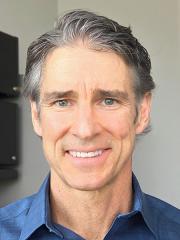
John "JW" Beard, MD, MBA
John “JW” Beard, MD, APSF board Member and Chief Medical Officer of GE HealthCare – Patient Care Solutions. Prior to entering the medical industry, Dr. Beard was in clinical practice for fifteen years as an anesthesiologist. While in clinical practice, Dr. Beard led multiple quality improvement initiatives and held leadership positions including Chairman and Medical Director of the Department of Anesthesia.
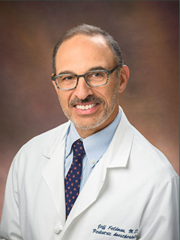
Jeffrey M. Feldman, MD, MSE
Jeffrey M. Feldman, MD, MSE is an Attending Anesthesiologist at the Children’s Hospital of Philadelphia (CHOP) and a Professor of Clinical Anesthesiology at the Perelman School of Medicine, University of Pennsylvania. Feldman has a special interest in the technology of anesthesia delivery systems including low flow and closed circuit anesthesia, mechanical ventilation of the anesthetized patient and patient monitoring.
Throughout his career, Feldman has combined his extensive background in engineering with an interest in the use of technology to enhance patient care. In addition to publishing and lecturing on technology related topics, he has been an editor of the Journal of Clinical Monitoring and Computing as well as the Section Editor of the Technology Section of Anesthesia and Analgesia. He currently chairs the APSF’s Committee on Technology.
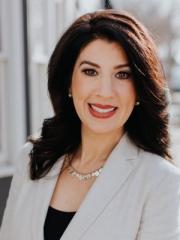
Desiree Chappell
MOM, CRNA and Host of The Roundtable Blog
Board of Directors, American Society of Enhanced Recovery (ASER). A passionate ambassador of Enhanced Recovery and Perioperative Care. Desiree is the creator of the popular Roundtable perioperative care blog: http://periopcareblog.com/
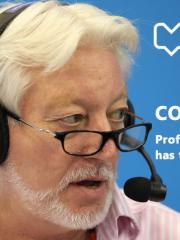
Prof. Monty Mythen
Co Founder and Editor In Chief of TopMedTalk
Monty is the Smiths Medical Professor of Anaesthesia and Critical Care at University College London and Adjunct Professor, Department of Anaesthesiology, Duke University, USA. Monty is also the founding Director of Evidence Based Perioperative Medicine International.













